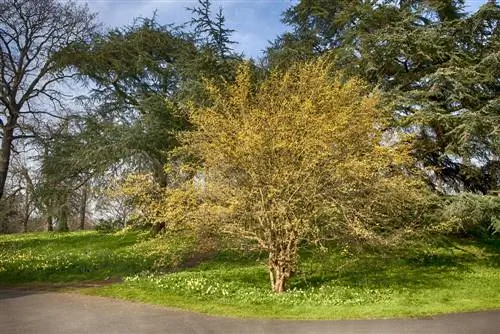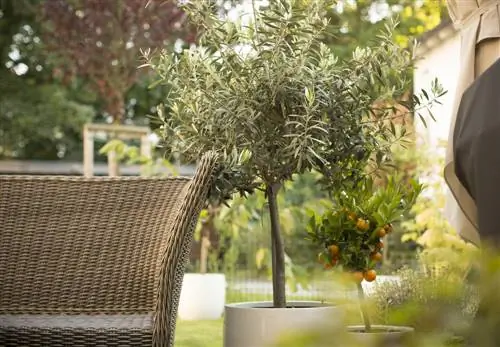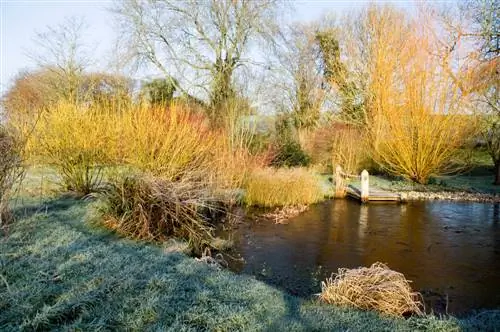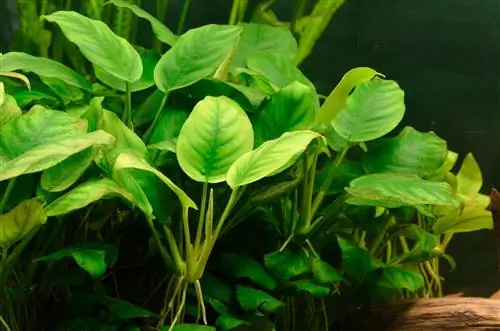- Author admin [email protected].
- Public 2023-12-16 16:46.
- Last modified 2025-01-23 11:21.
Some garden owners have little time and / or desire for gardening. Nevertheless, the meadow in front of the house should look attractive; this is easiest to achieve with an easy-care but representative tree. Which aspects you should pay attention to in order to really have as little work as possible with the selected tree.
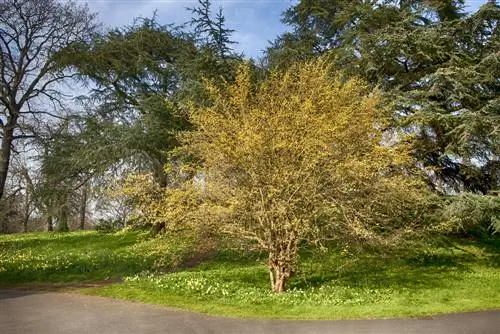
Which trees are easy to care for and require little work?
Easy-care trees are characterized by their adaptability to location and climate, winter hardiness and natural growth habit. Prefer native species such as maple, beech, linden, oak or wild fruit. Conifers reduce the amount of work due to falling leaves and fruit.
What you should pay attention to if you want trees to do little work
Most fruit trees produce delicious fruit, but they also require a lot of effort: They have to be cut regularly and correctly, and they also need fertilizer and, at times, water. In addition, a lot of work is required during the harvest season if the apples, pears or cherries are not to rot on the tree. In addition to these factors, the following also determine the intensity of care for a tree species.
Location
First of all, the better a tree fits the selected location, the easier it is to handle. So analyze the lighting conditions and the soil composition as well as the expected final size and width of the tree in advance and select the tree species based on these aspects. If the location is not 100% suitable, you will always have to take measures to make it “suitable” - for example with special fertilization or, due to a lack of space and a tree that is too large, regular pruning.
Winter hardiness
Many exotic tree species are not used to our climate and therefore require special attention over the winter months. This is not necessary if you pay attention to the climate adaptation and actual winter hardiness of the tree species from the outset. Naturally, native species do particularly little work in this area. So prefer typical forest trees such as maple, beech, linden, oak or wild fruit such as spar, cornelian cherry, serviceberry etc. - of course only if there is space in the garden, as many of the species mentioned can grow very large.
Foliage / flowers / fruits
Deciduous trees, which shed their leaves in autumn, bloom in spring and bear fruit in autumn, often make a lot of dirt and therefore a lot of work: fallen flowers and pollen in spring, fallen fruits or fallen fruit in autumn and a lot Slippery leaves may need to be removed. Although you can safely leave all of this lying around (autumn leaves actually have some advantages, as they protect the tree's root area in winter and act as a natural fertilizer when they rot), but only on your own property. However, if leaves and fruits fall onto public land, cleaning is mandatory. The problem disappears if you plant conifers instead of deciduous trees.
Tip
Also pay attention to whether the tree has a special crown shape that can only be obtained by cutting. Naturally growing trees are significantly less labor intensive.

